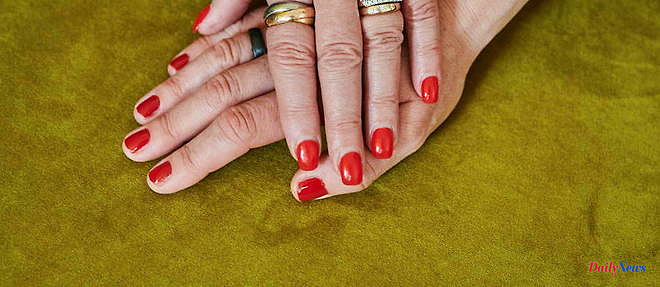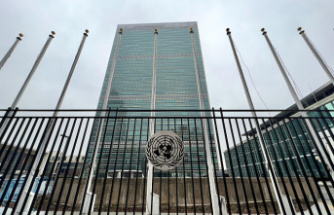Ultraviolet (UV) lamps, used in the application of semi-permanent nail polish, could increase the risk of cancer, according to a report by the Academy of Medicine, published on April 28. This treatment, very popular in nail salons, lasts two to three weeks compared to a few days for a classic product. Usage is so widespread that in 2010, 87% of nail bars worldwide were already equipped with these UV lamps.
However, the Academy of Medicine highlights the dangers of these machines "combining UV (at least 48 watts) and light-emitting diode (LED)". "These lamps emit UV A (UVA) rays that penetrate deep into the skin," she explains. They are known to promote aging, but especially the development of skin cancer. These ultraviolet rays are also present in sunlight and in tanning booths.
Dermatologists had already warned of the dangers of UVA radiation. As early as 2009, in vitro studies had shown their negative effects on human cells. “Type A UV rays cause DNA damage, that is to say at the level of the cell nucleus, explains Dr Jérémy Lupu, dermatologist at the Gustave-Roussy Institute. This can initially lead to aging of the skin, wrinkles and spots. In the long term, this DNA damage can possibly lead to the multiplication of melanomas, responsible for skin cancer. Only direct exposure to these lights leads to an increased risk of developing cancer. Thus, according to the dermatologist, people working near these lamps would be spared.
Three factors seem significant, according to the Academy of Medicine. The age of onset of use, which would be on average at 20 years, would be a major element. The frequency of these nail polish applications, around five to six times a year, could also increase the risk of developing cancer, as could exposure to these lamps for several years. The Academy of Medicine continues: "The cumulative effect of UVA exposures represents a major risk and can be aggravated by the terrain", namely fair skin or an immunocompromised body.
"The problem is also that these heat lamps have a UVA concentration 4 to 5 times greater than sunlight," notes the dermatologist. Ten minutes of exposure is the equivalent of fifty minutes under the sun, which is the maximum daily level. »
Finally, the Academy would like the number of heat lamps sold each year to be recorded in order to estimate "the evolution of the market". The Academy of Medicine hopes that large-scale epidemiological studies will be carried out to more precisely assess the risk. "This is not to be alarmist: only the excessive and repeated use of these lights can damage the skin. Above all, you have to be vigilant, ”concludes the dermatologist.












